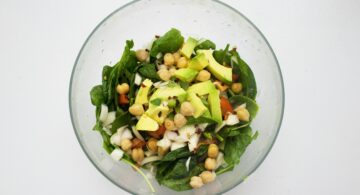Nutrition for Spine Health
To understand how to overcome neck and back pain from a nutritional perspective, it takes an understanding of the anatomy of the spine. Our spine is an extremely important part of the musculoskeletal system and is not just composed of boney vertebrae. It contains nerves, bones, ligaments, tendons, discs and muscles. Each part of the spine has an important job in the movement, mobility and integrity of the spine. Each component also has different nutritional needs in order to maintain optimal health.
Maintaining the integrity of the spine requires an understanding of what nutrients feed, nourish and protect the different structures of the spine. Below, each of the connective tissues of the spine are listed with the nutrients they need. Incorporating this nutrition not only prevents, but also eases injury, degeneration and pain.Every nutrient needed for spine health has a healthy food source. Nutrition that comes straight from food is always better absorbed and utilized than just popping a vitamin or supplement. However, in cases of extreme deficiency or compromise, supplementation may be necessary.
Nutrition for Bone Health
The 33 vertebrae of the spine itself are composed of bone tissue. As we age, especially once we reach the age of 60, our vertebrae may begin to degenerate.
- Bone spurs, otherwise known as osteophytes, can form on the vertebrae of the spine causing pain or discomfort.
- Osteoporosis is another common culprit in the breaking down of the vertebrae bones of the spine.
Keeping the bone tissue of our vertebrae strong and healthy is extremely important in maintaining the strength and integrity of our back and neck! The vertebrae of our spine, like all bone, is composed of minerals. Having the proper ratios of minerals and being able to utilize them, is what prevents bone from becoming brittle or weak. Some of the most important nutrients in bone formation and maintenance include:
- Calcium: Found primarily in dairy products. However, kale and broccoli are excellent vegetable sources of calcium.
- Magnesium: Dark chocolate is an amazing and tasty source of magnesium. Nuts like almonds, cashews, brazil nuts, and sunflower seeds are also high in magnesium.
- Phosphorus: Also found in many nuts and seeds like brazil nuts, sunflower seeds, and pumpkin seeds. Cheese is also a great source of phosphorus.
- Vitamin D: Eggs and fatty fish like anchovies and salmon are great healthy food sources of vitamin D. However, 20 minutes a day of sunlight is the best way to get vitamin D and will meet your daily requirements for mineral absorption.
- Vitamin K: Leafy greens, broccoli, asparagus and even cucumber are natural sources of vitamin K. The richest source of the potent K2, which is the best form for calcium absorption, is found in a japanese food called natto. Although this fermented food is difficult to find, a pill form is easily purchased at most health food stores or online.
Nutrition for Ligaments, Tendons and Vertebral Discs
Most neck and back pain has its roots in inflammation. This inflammation typically occurs in the connective tissues of the ligaments, tendons and vertebral discs of the spine. These important structures of the spine are composed primarily of collagen and cartilage. Often confused, our tendons connect muscle to bone and ligaments connect bone to bone. Both tendons and ligaments provide stability for the spine.Vertebral discs provide cushion and act as a shock absorber between each vertebrae. Herniated and bulging discs are one of the most common and painful problems one can endure when experience back pain. However, an inflamed ligament or tendon can also cause extreme pain and discomfort. When there is inflammation, pressure or irritation occurs in the nerves of the spine. Quelling the inflammation allows the nerves to quit firing pain signals and therefore brings relief.
Though chiropractic care can greatly improve these types of spinal issues, nutrition is also important. Eating foods that contain anti-inflammatory properties is extremely beneficial. Also, collagen boosting foods help keep ligaments, tendons and discs flexible. Below are some important nutrients that help support and repair the spine’s ligaments, tendons and vertebral discs.
- Manganese: Found in dark chocolate, pumpkin seeds, pine nuts, and pecans. Manganese is very important in the synthesis of cartilageinous tissue.
- Omega-3: Found in fatty fish like sardines, tuna and salmon. Omega-3s are both collagen forming, as well as anti-inflammatory. I personally recommend supplementing with a quality fish oil to get an adequate daily dose.
- Antioxidants: High antioxidant foods include berries (blueberries, raspberries, and blackberries), red beans and dark chocolate. Antioxidants support collagen formation and have anti-inflammatory properties, as well.
- Vitamin C: Our bodies needs vitamin C to produce collagen. Vitamin C rich foods include: oranges, lemons, limes, spinach, kale and strawberries.
- Sulfur: Collagen cannot be formed without sulfur. Foods high in sulfur include: broccoli, cabbage, cauliflower and onions.
- Vitamin A: Vitamin A is very important in the repair of damaged collagen. Carrots and sweet potatoes are two of the best food sources to incorporate into your diet for adequate vitamin A.
Nutrition for Muscles
The muscles of the spine control its movement and provide support. Strengthening these muscles with exercise is the best way to keep the back strong and prevent compromise of the spine. However, our muscles require adequate nutritional support, as well. The primary source of nutrition for our muscles is protein. Some fantastic protein sources to incorporate into your daily diet include:
- Grass fed red meat
- Free range chicken
- Free range eggs
- Quality rBgh free whey protein. Choosing rBgh free whey protein is important for 2 main reasons:
1. Cows given rBgh hormones are forced to over-produce milk, therefore they are at risk for malnourishment and mastitis.
2. Residues of rBgh can contaminant the milk products and when consumed can lead to hormone disruptions and disease.
Make sure and include a protein source at each meal! Without adequate protein, our muscles will begin to waste away. Strong back muscles are essential to maintaining a strong healthy spine!
Nutrition for Nerves
Most neck and back pain occurs from nerve pain. Spinal nerves become irritated from the compression and pressure from different structures of the spine. Misalignment of vertebrae and inflammation are the two most common causes of this nerve pain. The sciatic nerve, which runs from the lower back to lower legs, is one of the most common complaints of nerve pain. There are several nutrients can help calm the nerves, therefore providing pain relief.
- L-Tryptophan: This amino acid helps to calm our nerves by boosting serotonin levels in the body. Dark chocolate and rBgh free whey protein contain high levels of naturally occurring L-tryptophan.
- B-Vitamins: This family of vitamins are often called the stress vitamins. This is because they help to buffer stress in the body. B vitamins can also help calm your nerves. Foods high in B vitamins include sweet potatoes, yams, lentils and chickpeas.
- Magnesium: A calming mineral for the nervous system, magnesium is found in dark chocolate, bananas, brazil nuts and almonds.
Recipes for Spine Health
Incorporating the nutrition needed for a healthy spine into your diet can be easier and more delicious than you might imagine. Remember, you spine is made up of several tissues, each one needing it’s own source of nutrients. Luckily, some very delicious foods provide nutrients needed by several of the spines components.
Dark chocolate contains magnesium, which is important for both bone formation and nerve health. It is also a great source of manganese which is important for cartilage synthesis. And that isn’t all!
Chocolate contains powerful antioxidants which can help with inflammation. Chocolate is a food that no one really complains about eating. But, not all chocolate is created equal. Most chocolate is packed with sugar and does not contain enough cocoa to contain health benefits. Look for chocolate that has over 60% cocoa content. The higher the cocoa percentage, the higher the nutritional content.
This recipe for Peanut Butter Chocolate Fudge contains whole, healthy ingredients and does not contain refined white sugar. It is so delicious, it is sure to fool even the pickiest of eaters.
Peanut Butter Chocolate Fudge
Ingredients:
- ½ cup coconut oil
- ½ cup quality dark cocoa powder
- ½ cup of all natural peanut butter
- ½ cup raw honey
- ½ tsp vanilla extract
Directions:
Prepare a muffin pan with 10 muffin liners. Put all ingredients in the bowl of your food processor. Pulse a few times until everything is smooth and nicely combined. (It will be very liquid-y.) Don’t over-mix.
Pour the liquid fudge into the prepared muffin liners dividing evenly between the ten of them. There will be about a half inch of fudge in each muffin liner. Place the muffin pan in the refrigerator for 30 minutes or until the fudge has hardened. You can use the freezer and it only takes about 10 minutes. Remove the muffin liners from the pan and enjoy your delicious, healthy fudge! Store in the refrigerator.
Whey protein is not only an excellent source of protein for our muscles, but it is also a great source of nerve calming L-tryptophan. These whey protein balls are a staple in my home and make an excellent afternoon snack or grab and go breakfast. They are also well loved by my kids who equate them to a cookie-like treat.
Chocolate Almond Protein Bites
Ingredients:
- 1 1/2 scoops chocolate whey protein powder
- 2 tsp cocoa powder
- 1/4 cup oats
- 1 handful almonds (about 20)
- 2 packets Stevia/Truvia
- 2 tsp vanilla
- 1 Tbsp cinnamon
- 1 tsp salt
- Dash of almond milk or coconut milk
Directions:
- In a food processor, pulse the protein powder, cocoa powder, oats and almonds.
- Add in the rest of the ingredients.
- Pulse/stir until sticky and slightly chunky. (Add in more almond or coconut milk if it won’t stick).
- Use a spatula to scrape the sides and pulse again.
- Roll into balls using a spoon and your hand.
- Place on a tray and freeze for 30 minutes. Transfer to small baggies and place in the fridge.
Achieving true spine health requires not only exercise, chiropractic care, and good posture. Proper nutrition is also an essential key to the maintenance and health of the spine. Each structure of the spine is important and ignoring just one structural component of our spine can leave you in a state of pain or discomfort. Giving your entire spine the correct nutrients will be a decision you will never regret.
You don’t have to suffer with decreased mobility or increased pain as you age! Our body has the innate ability to heal and restore itself. Give your spine what it needs and you can feel like you did in your youth.




























